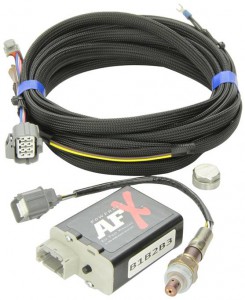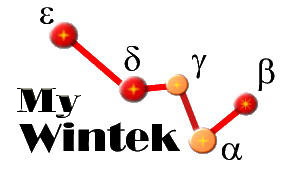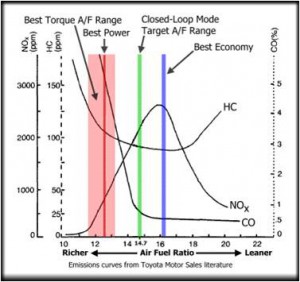Wide band Lambda AFR
One of the most important aspects of the internal combustion engine is the ratio between the air and the fuel. When something needs to explode it must be the right amount of fuel to air to keep the explosion. If there is too much air, the combustion will occur too quickly and become too hot. Is there too much fuel the burn gets cold and slow.
What is Lambda? Lambda 1.0 is the stoichiometric ratio of air to fuel for all fuels. This is the chemically perfect relationship between air and fuel for complete combustion. For gasoline the ratio will be 14.7 with 14.7kg air to 1 kg gasoline what will provide lambda 1.0. The most sensors are calibrated in the Air Fuel Ratio (AFR) and will then show 14.7. By AFR 12.8 the engine will give max power and by about 16 it will run most economical. The curves on the picture show the relation between AFR, Carbon monoxide (CO), Nitrogen Oxides (NOx), and Hydrocarbons gasses (HC). The target is 14.7:1.
A lambda sensor or O2 sensor may be narrowband or wideband. Broadband type can show from AFR> 10-20 and thus provide accurate information about if the engine is running rich or lean.
A broadband lambda air fuel mixture meter (AFR) is available in many different designs.
On Amazon I found a NGK kit with a nice little 4 digit display unit ‘NGK AFX Powerdex AFX Air-Fuel Ratio Monitor Kit to 278 USD’.

I wanted measuring the total AFR figures for all eight cylinders; therefore I mounted the wide band sensor with a no-weld clamp just after the Y piece exhaust.
A No-weld wideband oxygen (lambda) sensor clamp 2/25 “- 2/5” (x1): GBP 29.99 EFI-parts.co.uk.
The indicator unit is discreetly placed in the opening over the radio and work perfect.



